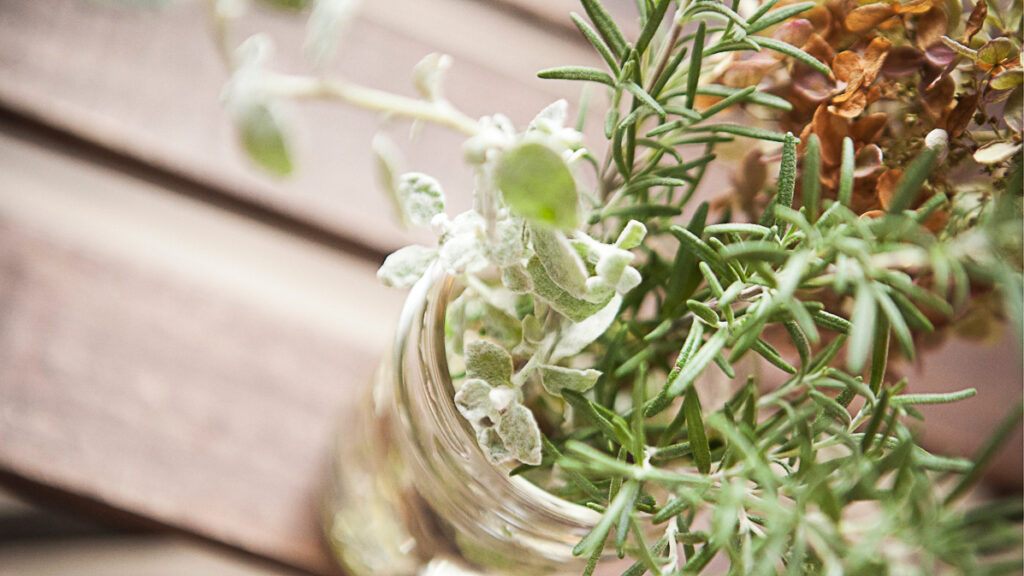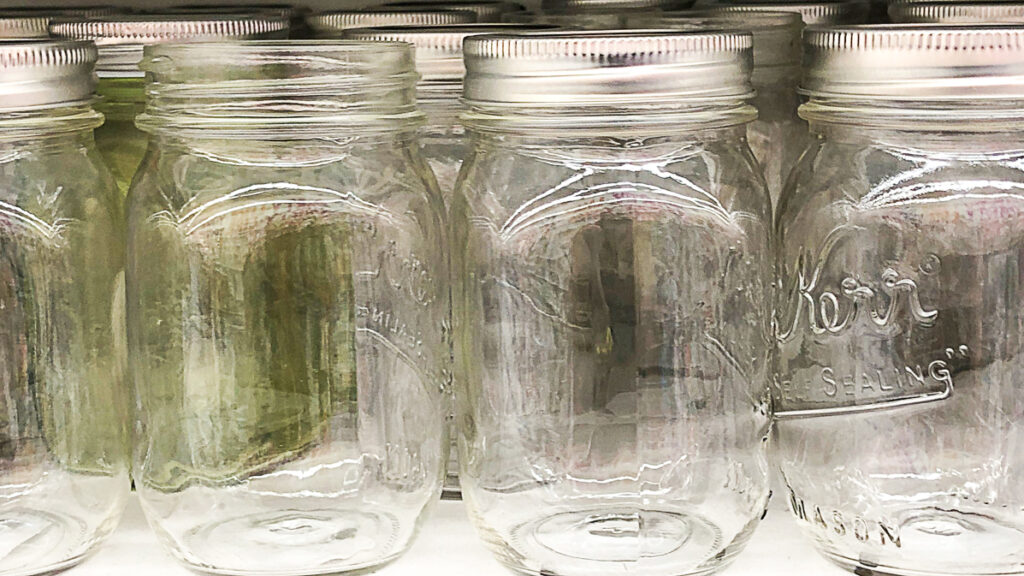Mason jar hydroponics is a convenient way to plant herbs indoors. Mason jars are readily available for preserving and packing foodstuff. You can reuse these jars by starting a Mason jar hydroponic herb garden.
*This post contains compensated links. Find more info in my DISCLAIMER. As an Amazon Associate, I earn from qualifying purchases.
Want to start a hydroponic garden at home easily? Check out our recommendations for Best Hydroponics Starter Kits for Beginners.
What Can You Grow In A Mason Jar
Not all plants can be grown in a Mason jar. Large plants cannot be grown in a Mason jar because of their size. Herbs are among the best plants for hydroponics in Mason jars.
Plants that need draining off the water cannot be grown in Mason jars because Mason jars have only one entrance located at their mouth. There is no other way for water to drain except the plant absorbing the water.
Growing lettuce in a Mason jar is very popular. However, you can also produce several hydroponic herbs in a Mason jar.
It would be best if you germinated the seeds in trays with Rockwool growing cubes. Once the seeds germinate and form roots, then transfer them into your Mason jar hydroponics. Ensure that your jar is large enough for root growth.
The following herbs are ideal for Mason jar hydroponics:
- Basil
- Lettuce
- Parsley
- Sage
- Lavender
- Rosemary
- Cilantro
- Thyme

Kratky Hydroponics In A Mason Jar
Kratky hydroponics are great for beginning hydroponic growers. They are easy to make, durable, and cheap. They are a great way to see if you are fit for Mason jar hydroponics.
The Kratky method is a non-circulating hydroponic gardening method. The process does not require electricity, pumps, or aerators.
Only the tips of the roots touch the water in the Kratky system. The plant’s roots deplete the water in the reservoir as they grow.
The process will leave an air gap in the jar. The plants will take advantage of this air and develop oxygen roots. The strategy’s aim is to run out of water when the plant is ready for harvest.
Kratky hydroponics is very simple and only requires a few materials. However, you will need to cut a hole in the jar lid. Fit the net cup and Rockwool cubes into the hole. Fitting the net cup is the biggest challenge with this hydroponic system.
It is essential to know how long the plant will take to mature when selecting what to grow in a Kratky hydroponics system. Leafy greens like basil, spinach, lettuce, and kale are great.
Materials Needed For Hydroponics In A Mason Jar

You will need other supplies in addition to a Mason jar. However, you only need a few materials for Mason jar hydroponics.
The supplies are relatively cheap, and you can purchase them from hydroponic supply stores or online. You will require the following materials:
- Mason jars. Mason jars are available in different sizes. The plant you want to grow will determine the size of the Mason jar. You might also need several jars depending on the size of your Mason jar hydroponic herb garden.
- Net pots. You will require a net pot for each Mason jar. You will use the net pot to hold hydroton clay pebbles and Rockwool in place.
- Rockwool cubes. Mason Jar Hydroponics grows its plants directly in water. It is therefore essential to find a medium that will offer physical support to the plant. Rockwool growing cubes provide physical support to the plants.
- Hydroton clay pebbles. Hydroton clay pebbles are excellent water absorbers, thus collect excess water and store it for later use. The pebbles will prevent excess water from damaging the roots.
- Hydroponic nutrients. Mix a nutrient solution with the water to provide the nutrients that the plants require.
- Seeds. The plant seeds that you want to grow in your Mason jar hydroponics.
Steps To Set Up Mason Jar Hydroponics
Starting a Mason jar hydroponics herb garden is not difficult. The following steps will guide you through:
Step 1: Germinating The Seeds
You cannot plant the seeds directly in the Mason jar. Plant the seeds in Rockwool cubes. Transplant the seedlings into your Mason jar hydroponic system once their roots extend out of the bottom of the cube.
While the seeds are germinating, it is the right time to prepare your mason jars.
Step 2: Preparing The Mason Jars
Wash the mason jars to ensure that they are free from any germs or contamination. Rinse the hydroton clay pebbles.
You will need to restrict light from entering into the jar to prevent algae growth. You can paint the jars using black paint or use duct tape to cover the jars.
Alternatively, you can use a light-blocking fabric sleeve. The fabric is the best as you will see your plant’s roots and determine when to add water.
Fix the net pot in the jar. Make sure to screw the band onto the jar to hold the net in place.
Fill the jar with water and stop about a quarter-inch above the bottom of the net pot. Ensure that you add the hydroponic nutrient mix.
Step 3: Transplanting The Sprouted Seedlings
Once your seedlings have sprouted, and your mason jar is ready, it is time to transplant the herbs.
Place a layer of hydroton clay pebbles at the bottom of the clay pot. Place the Rockwool cube with the sprouted seedling onto the pebbles.
Carefully place more hydroton pebbles around and above the Rockwool cube.
Place your hydroponic mason jar in a sunny location. If the sunlight is not adequate, provide artificial light.
Benefits Of Mason Jar Hydroponics
- It is simple and requires a few inputs.
- Mason jar hydroponics requires little space.
- It is the best for hydroponic gardening beginners.
- Suitable for every season and all-weather.
Disadvantages Of Mason Jar Hydroponics
- Not suitable for large plants.
- Not ideal for plants that require draining off water.
Mason jar hydroponics is an effortless art to master. It makes it to dip your feet in and test whether hydroponic gardening is for you.
Don’t be afraid to start your Mason jar hydroponic herbs garden right away with the above simple tips and steps.
FAQs – Mason Jar Hydroponics
Mason jars are highly versatile containers. While most people think of them for beverages or pickling, you can, in fact, grow plants in a mason jar. The most important thing to remember with mason jars is their size. Roots need space to grow, so selecting the right size plant for the right size mason jar is step one.
Yes. Lettuce, especially leaf lettuce has shallow roots. This makes growing lettuce in a mason jar not only practical but worth trying out.
Growing hydroponically in a mason jar is best done by purchasing a mason jar hydroponics kit. These kits provide everything you need to start growing. Best of all, if you are new to hydroponics or home gardening, they provide detailed instructions, while some brands even offer support via social media
